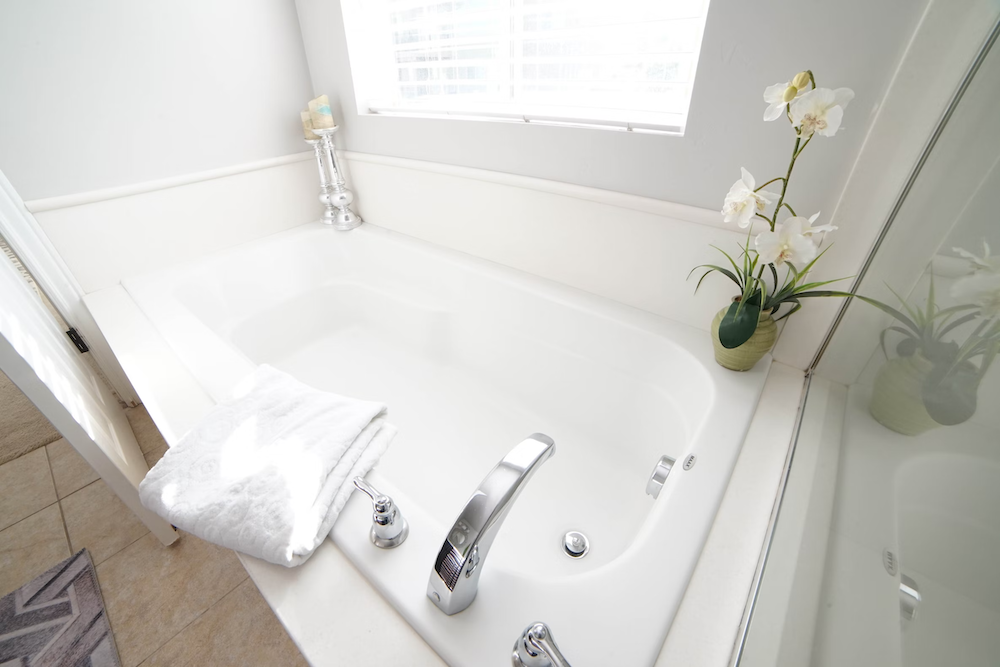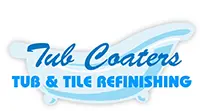Removing Old Reglazing Coating on Your Bathtub: Stripping Refinished Tub

Bathroom fixtures, especially bathtubs, undergo a lot of wear and tear. People use tubs so often that it puts a lot of stress on the surface, causing blemishes, stains and peeling if a cheap coating was put on the tub in the past. Some would attempt to remedy the peeling situation if it exists by reapplying a coat for it to look new. When done correctly, there won’t be any problem. Unfortunately, all DIY reglazing often leads to incorrect application and bathtub stripping is required again which will cost a customer more money.
What Is a Refinished Tub?
A refinished bathtub is a tub that has been restored to its original appearance. The refinishing process involves repairs, resurfacing and reglazing.
Repair work in a tub includes fixing its body for issues like cracks and chips. Sanding, buffing and removing rust and grime are also part of the repair process. Resurfacing includes repairs and sanding to give the tub a smooth surface. It prepares the tub for the reglazing coating, referred to as reglazing. Reglazing is the final step in the refinishing process and is synonymous with professional coating. A commercially-prepared paint coating is applied on the tub’s entire surface as a sealant and finish.
Most often, bathtub refinishing, bathtub repair, tub resurfacing and bathtub reglazing are used interchangeably. However, each of them technically means different things.
Related: Fiberglass Bathtub Refinishing
What Do You Mean By Bathtub Stripping?
Bathtub stripping is the process of removing old glaze or coat from the tub’s surface. In doing refinishing work, old coats must be totally removed for the new coat to adhere properly to the surface.
Stripping the existing coat is a tedious job. It requires diligence on the part of the tech since the chemicals used may be harmful and it takes specific machinery to properly perform the task. Professional companies specializing in bathtub refinishing are also conveniently available at your disposal. These specialized refinishing companies know the entire process and safety precautions while working.
Steps In Removing Old Reglazing Coating on a Bathtub
Keep this in mind; removing old reglazing coating on a bathtub can burn your skin. Always be cautious of the steps and mind the chemicals in your hand and the tub. Sometimes, people end up in the hospital with severe injuries (or death) for failing to practice safety standards and using incorrect chemicals.
Materials Needed:
- Safety goggles
- Heavy-duty trash bags
- Duct tape
- Scissors
- Scrub pads
- Paper towels
- Box fan (the best choice), but any fan will do
- 3M disposable respirator fitted to your size
- Heavy-duty chemical gloves at least 8 mils thick
- Brush or polypropylene toilet mop
- 6” taping knife or 4” razor scraper (long handle)
- 1” razor scraper (long handle)
- 80 and 180 grit sandpaper
- 2×2 6 mill plastic
General Steps to stripping a tub (Tub Coaters does not suggest that any one attempt this procedure without proper experience):
- Protect the surrounding area of the tub. Cover the floor, wall and other fixtures near the tub with heavy plastic (trash bags work well) and secure it with duct tape.
- Remove the overflow cover plate. Put balled-up paper towels in the drain and overflow hole. This will keep any harsh chemicals or loose paint debris from entering your plumbing system.
- Prepare your ventilation support. Before starting the bathtub stripping procedure, set up a fan to help regulate the airflow. Also, wear your disposable respirator. Make sure it fits you perfectly – not too tight or loose.
- Wear your protective gloves before handling any chemicals.
- Pour the OSHA approved paint stripper along the top sides of the bathtub. Let the liquid stream down from the top of the tub to the bottom surface. You can also use a brush or toilet mop to spread the chemical better. This chemical is highly acidic in nature. Be careful not to spread it on other surfaces. Splashes may also occur if you are not careful enough, so keep yourself and your clothes and shoes safe.
- Wait 15 to 30 minutes for the paint stripper to dissolve the coating layer. Sometimes, this step can take longer.
- When you see the coating bubbling and lifting, use the 6” taping knife to scrape off the coat. Sometimes, a stubborn coating may require using a 4” razor scraper with a long handle. You can also use a 1” razor scraper to get into tight nooks and corners.
- After removing the bathtub stripping agent, sand the surface with 180-grit or lower sandpaper.
- Repeat steps 5-8 if you need to remove multiple layers. Brush off the lifted coating from the skirt and tub rail into the tub to keep your arm safe from burning as you reach and clean. When the coating drops onto the covered floor or gets into your clothes or other surfaces, remove it quickly and drop it back into the tub. Even with plastic covering, the chemical’s vapor can get through it and damage other surfaces.
- Collect all the lifted coating to one side of the bathtub.
- Put the 2×2 plastic on the other side of the tub bottom and use the 6” taping knife to get the collected coating, and drop it into the plastic’s center. Pick it up at all four corners so that no coating falls off. Throw it inside a trash bag. Double bag the garbage for safety reasons.
- Take the garbage out of the house and put it on ceramic tile or unpainted cement. These are the only surfaces that usually won’t be affected by the harmful vapors from the chemical agent.
- If some coating is left, remove it using 80-grit sandpaper.
- Rinse and clean the bathtub. It should be dried properly before use. Otherwise, the remaining agents can possibly harm you or your family.
Takeaway
The tiring (and dangerous) job of bathtub stripping requires both knowledge and skill to complete. But bathtub refinishing is always worth your investment. Professionals such as Tub Coaters Tub & Tile Refinishing have mastered the craft of bathtub stripping and refinishing.
Our 26+ years of experience say a lot about how well we do our job. So, don’t hesitate to contact us for your bathtub needs!
Related: Shower Refinishing
Related: Maryland Tub and Tile

